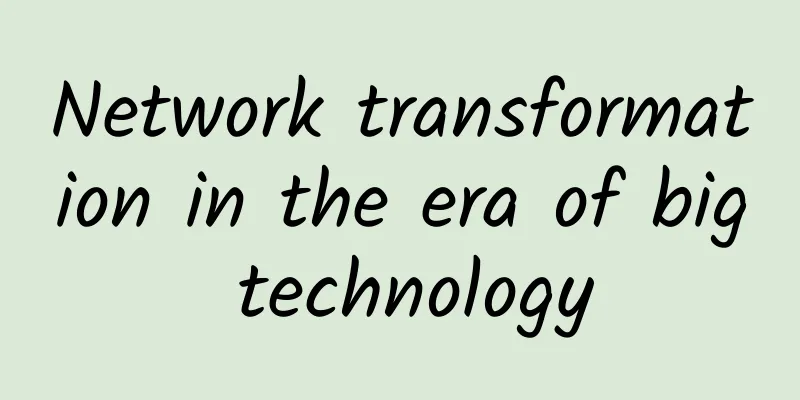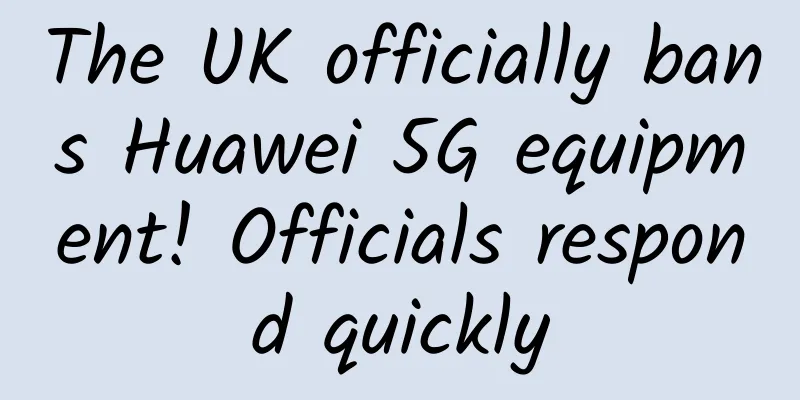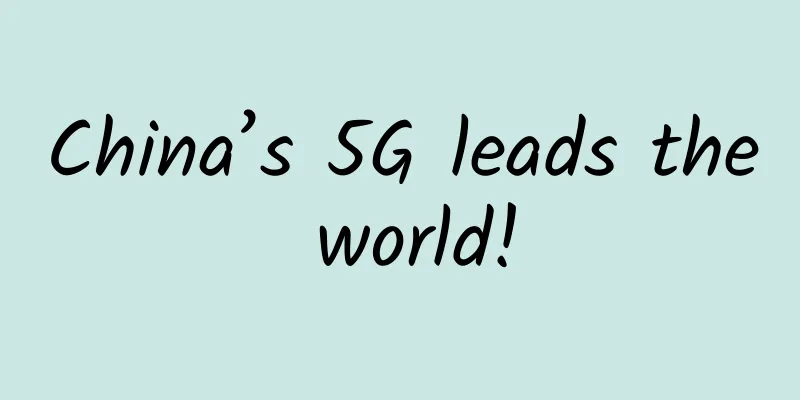Stop praising 5G!

|
On January 17, Huawei founder and CEO Ren Zhengfei said in an interview with the media: "The role of 5G has actually been exaggerated, and Huawei's achievements have also been exaggerated by even more people... In fact, human society does not have such an urgent need for 5G now... Don't think of 5G as a wave. When the wave comes, wealth comes. You have to grab it quickly. If you don't catch it, you will miss it. The development of 5G will definitely be slow." In the past period of time, "5G" was the "darling" of the public opinion field, and was portrayed as the "savior" of the world. It seemed that the future of 5G world was already within reach. Many people were highly optimistic about the development of 5G in China, and views such as "China is the leader in 5G" and "China dominates the 5G era" were widely circulated. Ren Zhengfei's words make us reflect: Is 5G just a good thing? At the same time, we also see that American operators are not interested in 5G. US President Trump's team is even considering government-led 5G network construction; and Chinese operators do not seem to show as much interest as people imagine. When it comes to 5G, we need to look beyond the surface. To what level has 5G technology developed? What is the effect of actual commercial use? Do people have an urgent need for 5G? Can China's strength and status in the 5G field really be called "dominant"? Amid the heated discussion, Uncle Ku will talk about it calmly. 1 Existing 5G technology is not that magical The "Lenovo voting scandal" that year attracted great attention from the public, but it also caused many people to misunderstand it. For example, "coding" was overheated, and even LDPC and Polar (5G coding technology) were equated with 5G standards. In fact, coding is only one of the key technologies of 5G, and it is not the most critical technology in improving transmission efficiency. So, what are the key technologies of 5G? Please see the figure below. (Picture shows 5G key technologies) In terms of modulation, coding, multiple access, networking, multiple antennas, etc., many of them are based on old technologies, while some new technologies are immature, unavailable, or have limited transmission gain. Let’s first look at coding. The much-hyped LDPC and Polar do not actually significantly improve system efficiency. According to industry insiders, their main significance lies in achieving a theoretical limit, representing a milestone in human exploration of nature, but their significance in improving practical efficiency is limited. Looking at multiple access, multiple access is the core technology field of mobile communications. The first to fourth generation mobile communications (i.e. 1G to 4G) respectively adopted FDMA, TDMA, CDMA and OFDM technologies. Now the mainstream view of 5G multiple access technology is NOMA (the various technologies named by domestic and foreign equipment manufacturers are all modified versions of NOMA). What is the significance of new technology? According to industry insiders: NOMA (Non-Orthogonal Multiple Access) was first advocated by NTT Docomo in September 2014. The idea is to allocate non-orthogonal communication resources to different users at the transmitting end. In an orthogonal scheme, if a block of resources is evenly allocated to N users, then each user can only be allocated 1/N of the resources due to the orthogonality constraint. NOMA gets rid of the orthogonality constraint, so the resources allocated to each user can be greater than 1/N. In extreme cases, each user can be allocated all resources, realizing resource sharing among multiple users. Although the ideal is very good, it has been mathematically proven that the spectral efficiency gain of the NOMA route is strictly zero. Similar situations also occurred in the 4G era. In the formulation of 4G standards, Ericsson promoted SC-FDMA as an uplink multiple access scheme for LTE, which is a variant of OFDM. Ericsson claimed that this scheme could reduce the peak-to-average ratio and reduce the requirements for terminal power amplifiers. However, subsequent research and practice showed that the negative impact of SC-FDMA on pilot design even exceeded its benefits, and its overall performance was not as good as the simple clipping scheme of OFDMA. But even so, Ericsson used its own influence to include SC-FDMA in the 4G communication standard patent. Although this approach increased Ericsson's voice in the 4G standard and was able to receive more patent fees, it reduced the operating efficiency of the entire system. Let's look at multi-antenna technology. 5G promotes mass MIMO technology. MIMO (multi-antenna technology) has been a hot topic in the past 20 years. It does have potential and is a direction for improving communication capabilities. However, after years of research, it has been found that it is still difficult to achieve practical transformation from the laboratory to the market, and commercial applications have not been realized. The reason is not hard to understand. According to industry insiders, multi-antenna technology originally came from the field of military radar, but when it was transferred to civilian use, it faced complex terrain and other environments that were completely different from the sky. Difficulty in controlling costs became the Achilles' heel of its commercial transformation. In terms of networking, CoMP has almost zero gain compared to SFR/MLSFR in the 4G era, or even negative gain. Let’s talk about time division duplex (TDD) which was hotly discussed some time ago. Some time ago, an article stated that "today, all 5G technologies in the world are TDD technologies." However, this statement is easy to cause misunderstanding and needs to be explained. In the 5G blueprint, time division duplex is not used, but full duplex. In the 4G era, TDD-LTE uses time division duplex, and FDD-LTE uses frequency division duplex. Full duplex simply integrates the advantages of time division duplex and frequency division duplex, achieving the best of both worlds. [Note: TDD means that the uplink and downlink transmissions use the same channel. Its main advantages are that there is no interference between the transmitter and the receiver, and the uplink and downlink channel switching is flexible. FDD uses two independent channels to transmit data at the same time. Its main advantages are high communication speed and better resistance to external interference.] However, full-duplex is still in the laboratory and cannot be commercialized. Therefore, we can only make do with the old technology - time division or frequency division duplex, and cannot make any substantial breakthroughs. Therefore, in terms of these key technologies, the so-called 5G technological upgrades are not as magical as the legend says. Many new technologies have limited gains or are not yet mature enough to be practical. Some patents even have the suspicion of "reversing" technology. That is why some people call the current 5G a commercial concept rather than a technological iteration, and call it 4.9G. We are still far from the real "5G". 2 Why are operators not so enthusiastic? Although these improvements are limited and immature, the speed of 5G is a real "visible" improvement. How is this achieved? The method is actually quite "simple and crude", which is to expand the occupied frequency band, increase the density of investment in base stations, and improve the data processing speed of chips. In terms of spectrum resources, 5G is going to use about 1G of bandwidth. You should know that GSM (China Mobile's 2G network) has only 5M bandwidth, 3G has 20M bandwidth, and 4G has 60M bandwidth. According to Ericsson's previous extreme test, the network speed is indeed amazing, with a data transmission rate of up to 20Gbps, but using 800M bandwidth. Therefore, without going into details, just looking at the speed of the network is not very meaningful. The high speed of the current 5G network is largely due to the large bandwidth spectrum. This is where the problem comes in. Low-frequency spectrum is very precious, and it is too extravagant to directly allocate 800M bandwidth. In foreign countries, such golden frequencies are extremely expensive, and operators must think twice before making any decisions. So, if we want to deploy 5G now, we must use high frequencies. But high frequencies have poor coverage. The diffraction capacity of low-frequency spectrum resources (the frequency band used by 2G) can cover several square kilometers, while the diffraction capacity of high-frequency spectrum resources (such as the frequency band used by Wifi) usually does not exceed a 20-square-meter room. In other words, the coverage of building one base station with golden frequencies is comparable to that of building N base stations with high frequencies. In fact, the United States has chosen high frequency for its 5G spectrum. On November 15, 2018, the Federal Communications Commission (FCC) held the first 5G spectrum auction in the United States, opening the auction of 28GHz millimeter wave 5G spectrum (27.5-28.35GHz band, a total of 850MHz). Ericsson's previous test also opened up a width of 800M around the 15Ghz point, that is, the width between 14.6 and 15.4Ghz. These frequency band resources exceed the sum of the frequency bands that have been used for wireless communications in the past - of course, in the past, they were in the medium and low frequency bands, while 5G can only use high frequency bands. The current development route of 5G using high frequency and millimeter wave small base stations has the problem of poor coverage, which will make the final coverage structure very "touching". According to the transmission rate standards currently advertised, if 5G is to cover the areas currently covered by 4G in the world, the number of base stations must be at least five times that of 4G, that is, 15 million to 20 million 5G base stations.
(The picture shows China Telecom's 5G base station) The construction cost is imaginable. This also explains why operators are not as enthusiastic as everyone imagines, even though they know 5G is a "good thing". 3 Lack of a “killer” app The development of the communications field must fully consider the needs of its users for technological applications. There is a saying that claims that 5G is not mainly for people, but for "things". In other words, 5G will far exceed the scope of mass public communication networks, which have been the main business in the past 20 years of wireless communication development history. Indeed, the main theme of the current global promotion of 5G is "Everything is connected" or "Everything is connected." However, there is a problem here. Currently, many scenarios of so-called Internet of Things (IoT) either do not require 5G or do not trust public wireless communications. Although many media have "bundled" the Internet of Things and 5G together in their reports, the Internet of Things does not have to be used with 5G. Because the current Internet of Things mainly pursues long life, and when setting up an Internet of Things node, it is definitely not desirable to replace it every 1-2 days. Moreover, a large number of applications are low-speed, small-data-volume communication connections, so 2G, 3G, and 4G are sufficient. Take the world's largest IoT application case, the ofo bicycle smart lock, for example. The NB-IOT it uses is actually a simplified and abridged version of 4G developed by Huawei and China Telecom Beijing, and only requires a very small communication capacity. Coincidentally, not long ago, a domestic operator conducted a bidding for IoT chips, and the IoT chip that won the bid and won a large order used 2G. Therefore, the Internet of Things, at least the current Internet of Things, and the so-called Internet of Everything have no necessary connection with 5G. As for another popular application direction, autonomous driving, let’s not talk about whether the autonomous driving technology itself is mature. Even the autonomous car developed by Google is a “fat terminal” autonomous driving, and the process of receiving signals and responding is done on the car. What links 5G and autonomous driving together is the “thin terminal” model, where decisions are made on a “distant” server. This approach has great hidden dangers. Under the current conditions, using 5G networks for autonomous driving can be said to be asking for trouble, and it artificially creates space for hackers to completely disrupt modern society in an instant. The consequences can be seen in “Fast and Furious 8”.
(Picture from the movie "Fast and Furious 8") At present, the communication needs in areas with ultra-high density of people flow are a potential application direction for 5G. Previously, during the National Day Golden Week, the 4G network near the West Lake in Hangzhou was paralyzed due to the excessive density of tourists. In order to deal with similar situations, China Mobile began to promote the dense networking of 4G base stations. If the cost-effectiveness of 5G networking can be better than that of 4G base station dense networking (of course, it is quite difficult for 5G to control costs in this regard), this may become a good application direction for 5G at present. Therefore, the "killer" applications of 5G are still under the surface and need time to be discovered. 4 4G+5G How come wireless telecom operators are still able to survive despite Wi-Fi transmission speeds being so high (much higher than 5G claims)? Because users have an urgent need for a network with universal coverage (accessible at any location and at any time), ultra-high Internet speed is not a necessity in comparison. When users leave WIFI, they must have a communication network. In other words, they can maintain information connection in any corner of life, because this information connection can save lives in the most critical moments. Wifi or the existing WiMax cannot do this, they can only cover a small area, or try to cover the entire city but the effect is patchy. WiMax was defeated by LTE, which led to the bankruptcy of Nortel and Motorola, which bet on WiMax.
(The picture shows the Nortel Networks logo in front of the Nortel Networks office building in Toronto, Canada on January 14, 2009. The company declared bankruptcy two days later) However, according to the current development direction of 5G millimeter wave small base stations, the main goal is transmission rate. As we mentioned earlier, 5G needs to build several times more base stations than 4G in order to cover the areas currently covered by 4G in the world with its current advertised standards. The cost is extremely high, which makes operators lack sufficient interest. Therefore, if there is no effective business model and operators do not have the ability to build a universal 5G network, then this deviates from the basic needs of users. In summary, from the perspective of infrastructure costs and actual needs, it is neither realistic nor necessary to build a 5G network covering the entire country. So, is 5G networking impossible? That is not the case. Technically speaking, 4G and 2G are two very successful generations of technology, and the situation of 5G is somewhat similar to that of 3G. Just like the networking mode of 2G+3G in the past, 5G can completely adopt a similar networking mode in the future. Since 5G is unlikely to form a universal communication network, 4G must be used to achieve wide-area coverage. In fact, 3GPP has come up with a networking method of "4G base stations as the main + 5G base stations as the auxiliary", that is, 4G is used to achieve wide-area coverage, and 5G base stations are built in densely populated areas in large cities. This is actually the mainstream networking method chosen by foreign operators. In this way, the high construction cost of 5G base stations can be greatly reduced, and the Internet speed in densely populated areas can be improved. 5 Theoretical innovation and breakthrough are crucial The improvement in transmission capacity from 1G to 4G is due to both the improvement in system efficiency and the brute force stacking - achieved by consuming spectrum resources, using more powerful chips and investing heavily in building base stations. The level of escalation in violence has been explained in the previous article. In terms of system efficiency, there is a significant improvement from 1G to 2G, but the improvement from 3G is much smaller. Qualcomm advertised that CDMA would increase the gain by 18 times, but later it was discovered that the gain was not that high. However, everyone still believed that CDMA could be 5-6 times higher than TDMA, but in the end it was discovered that the gain was only 10% higher.
(The picture shows Qualcomm, an American company. Through CDMA, Qualcomm can "collect taxes" all over the world) In fact, the situation of 5G is even more extreme. Compared with previous communication technology upgrades, the improvement in its system efficiency is not significant, and it mainly relies on brute force stacking to improve performance. Even though the improvement of 3G is a bit exaggerated, CDMA still has a 10% improvement over TDMA. In the 4G era, there are also major improvements such as SFR, OFDM, and Alamouti, among which SFR is an original technology of Chinese engineers. SFR, Soft Frequency Reuse, was renamed ICIC (Inter-cell Interference Coordination) after being used by foreigners. It means the coordination of interactions between cells (base stations). Soft frequency reuse has become a new large field of wireless communications in the past decade. Now all operators have ICIC interface functions. SFR has a performance improvement of up to 100% under laboratory conditions. Even in actual commercial conditions, the initial performance improvement is 10%, which is equivalent to the efficiency improvement from TDMA to CDMA. Further deepening of MLSFR can improve it by 30%. In contrast, since 4G has made full use of the technological reserves of the past few decades and has already reached the ceiling of existing theories in many aspects, the current 5G has very limited room for improving system efficiency. To break the current situation, we need to reduce the commercial noise, calm down and make breakthroughs in theoretical innovation. Because the fundamental progress of human science and technology needs to rely on theoretical breakthroughs, otherwise it will only be an accumulation of quantity and cannot achieve technological iteration. The same is true for 5G, breakthroughs in basic theory are necessary. 6 China is a major player At present, there is a certain risk of "deification" of 5G in media publicity and commercial operation, and there is often a sense that "5G is faster than heaven, earth and air". Some media also strongly claim that 5G is China's leading standard or 5G is China's great innovation. In fact, this is not objective. After the 3G era, global communications manufacturers were still worried about Qualcomm's dominance, so in the subsequent standard setting, everyone was playing a balancing act to ensure that no company or country would dominate. As far as 5G standard setting is concerned, China is of course an important participant, but it is far from being a "dominant player." Some people will use the number of Chinese patents as an excuse, but in fact, the value of communication standard patents varies greatly. At least, in the 5G era, we have not been able to achieve the ability of Qualcomm to collect "Qualcomm taxes" around the world with core patents in the 3G era, and we still need to bear the "Qualcomm taxes". This also indirectly shows that the number of patents has not yet brought China a dominant position in 5G. China's advantages in the communications industry are its strong national decision-making and execution capabilities, the ability to concentrate resources, state-owned enterprises such as the three major operators that can achieve "village-to-village connectivity", and a number of excellent communications equipment and terminal manufacturers. (The picture shows a China Unicom signal text message received by Indian soldiers at the Sino-Indian border on April 2, 2018. This text message, known as the "Chinese text message that caused the Indian army to collapse," demonstrates the coverage capability of China's communication infrastructure) But the shortcomings are also obvious, that is, core components are still controlled by others. Once the core components are blocked, the entire communications industry will encounter major setbacks and difficulties. Therefore, at present, it is a bit too optimistic to say that "China leads 5G" and "China's comprehensive 5G strength is the best". We are on the road to progress, but the road is long and difficult. Only down-to-earth and unremitting efforts can enable us to truly realize our vision. (All pictures in this article are from the Internet) |
<<: Opportunity or chicken ribs? eMTC should not follow the NB-IoT price war
>>: Be careful when using Wi-Fi, ES File Manager will wipe out all your data
Recommend
Blockchain technology will change the world in these four ways
As the underlying technology of Bitcoin, blockcha...
The number of 5G package customers has exceeded 165 million. China Mobile announced its operating data for December 2020.
Since the Ministry of Industry and Information Te...
The 5G era is coming. Will the WiFi you use every day disappear?
When it comes to WiFi, everyone is familiar with ...
Why is the 400-MHz spectrum ideal for critical communications?
The 400 MHz spectrum, with its long range, excell...
DediPath: San Jose 1Gbps unlimited traffic server starting at $45/month, E3-1240v3, 32G memory, 2TB hard disk
DediPath recently offered special discount codes ...
Yunfan accelerates the "live broadcast +" SaaS solution to promote live broadcast into a new era
2016 is known as the "first year of online l...
Interview surprise: Why use HTTPS? What is it useful for?
Speaking of HTTPS, I believe most people are fami...
What is AI intelligence engine?
From Apple's Siri, Google Assistant to Amazon...
Quantum network achieves key breakthrough: based on quantum entanglement theory
[[248944]] The new network is based on the theory...
IPv6 basics, learn in one minute
1. Introduction to IPv6 1. IPv6 was previously kn...
LiFi is a wireless communication technology that uses visible light communication to transmit data
Visible light communication is a technology that ...
How can operators easily get on the battlefield in the 5G era? 4.5G will take on the heavy responsibility
With the arrival of 5G, maintaining 2G, 3G, 4G, a...
The cloud also needs its own network. The existence of SDN and VPC
If cloud computing is compared to water resources...
In 2020, China accounted for more than 85% of the world's 5G connections
The 2020 China 5G Terminal Global Innovation Summ...
Connecting cloud, data and intelligence, Inspur Network aims to build a fully connected network based on business in 2018
[51CTO.com original article] On August 29, the tw...









